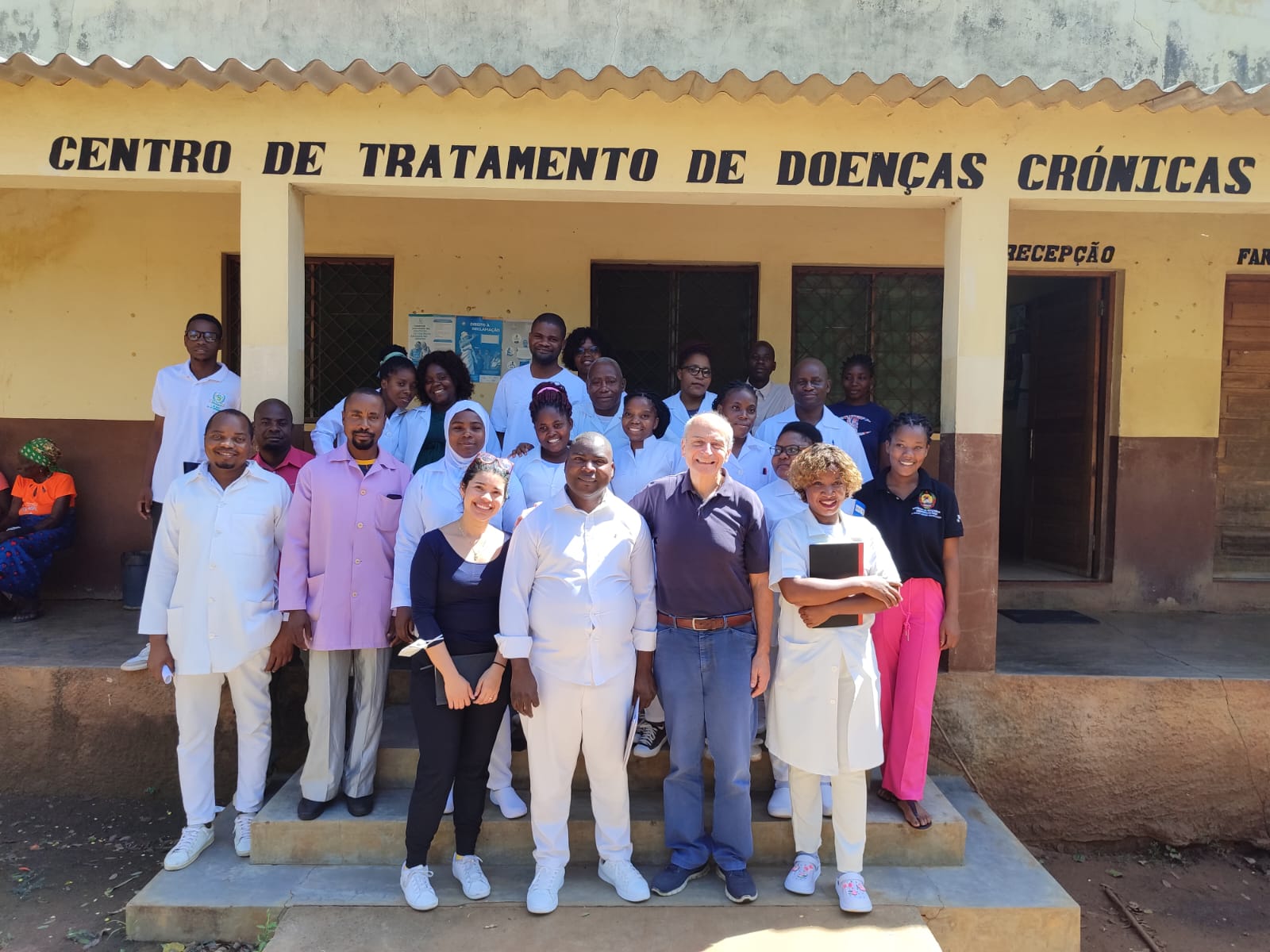Epilepsy in Africa: Training at DREAM Program Centers in Malawi and Mozambique
Epilepsy cases in Africa have doubled over the past 20 years, becoming a widespread yet often hidden phenomenon. In Mozambique and Malawi, 2% of the population suffers from epilepsy, with over 600,000 and 400,000 affected individuals, respectively. However, these numbers are significantly underestimated. In rural areas—where over 60% of Mozambique’s and 80% of Malawi’s populations reside—the prevalence doubles, exceeding 4%. Additionally, 80-90% of the population lacks access to treatment and is forced to live in the shadows. The DREAM Program has taken action in these regions, offering care for non-communicable diseases like epilepsy at its centers and introducing highly innovative training programs for healthcare workers, who often lack adequate training due to a severe shortage of doctors. In Africa, there is only one neurologist or epilepsy specialist for every 2.7 million people.
Diagnosing epilepsy relies on a detailed account of seizures, requiring thorough knowledge of the condition, strong clinical skills, and careful oversight by specialists. Training is also essential for sending clear clinical queries to specialists in Italy, fostering the use of telemedicine and creating a shared language between local clinicians—who are often not formally trained—and Italian specialists.
This dual challenge demands time and specific training efforts.
Over recent weeks, epilepsy training has continued at DREAM centers in Malawi and Mozambique. DREAM currently follows over 2,000 epilepsy patients in Africa, most of whom are young. Training for staff has occurred at multiple levels: an introductory level for new clinicians, a second level for clinicians with prior experience managing epilepsy, and an advanced level for operators conducting electroencephalograms (EEGs). The first week of training took place in Malawi, in Blantyre, followed by two weeks in Mozambique in Beira, Manga, and Mangunde, and a fourth week in Malawi across six DREAM centers treating epilepsy patients.
“Giving Care and Dignity”
During a staff meeting, José Zacarias, the clinical lead in Mangunde, reflected:
“This week, we’ve learned so much. We’re not just providing treatment; we’re giving dignity to epilepsy patients. The training and working alongside others while visiting patients have opened our eyes. Today, I see these patients differently. Previously, I only asked routine questions without delving into their lives. Their bodies tell their stories—scarred by falls during seizures, marked by burns. But there are deeper scars we don’t see: children excluded from school and even from their families, wives abandoned by husbands and left to fend for themselves and their children, patients isolated by their communities. Now, we have new eyes and words we didn’t have before.”
He continued, “We need to be closer to these patients. Many of them cannot see a future—it’s devastating. Treatment and dignity are our new responsibility. I commit to this responsibility and thank you for what I and all of us have learned these past days.”
Stories from Mangunde
The DREAM center in Mangunde has been operating for many years in a rural and impoverished area of Mozambique, with the nearest city, Beira, connected by mostly unpaved roads. Many patients travel long distances on foot through the bush, starting their journey the day before.
Tragically, some epilepsy patients experience seizures along the way, a distressing event that they recount with resigned normalcy. Local healthcare staff previously approached these cases “bare-handed,” uncertain about diagnoses or appropriate care. Prescribing medication alone is insufficient for these patients, who have been prisoners of their condition since childhood, enduring isolation, fear, ridicule, and abuse.
Here are some of their stories:
- A., 21, began experiencing epilepsy as a child. Rejected by schools, unemployed, unmarried, and childless, he barely speaks during his visit. His younger brother shares his story. When asked about his thoughts on his situation, A. responds with resignation, saying he sees no future. We talk to him, explaining his condition and the available treatments, debunking the myth that his illness is caused by “mau spirit” curses. Instead, we show him that his condition can be managed, allowing him to lead a life free from seizures like his peers. These words bring light to his eyes—hope.
- V., 23, traveled 70 km to the DREAM center after learning a specialist could treat his epilepsy. After his visit, he feels relieved but concerned: the journey costs him 800 MT (about €12), an overwhelming expense for an unemployed person. Determined, he takes meticulous notes on managing his condition. To reduce his costs, we agree to monitor his progress through phone calls, extending the intervals between in-person visits.
- F., 11, lives over 100 km away. His parents, hearing of a neurologist at DREAM, seized the opportunity despite lacking money for transportation. They entrusted a neighbor to accompany him. During his visit, F.’s parents provide crucial details over the phone, enabling us to reconstruct his complex medical history and tailor his treatment.
Many children arriving at Mangunde have histories of cerebral malaria, evident from a paralyzed and shortened arm often paired with their epilepsy stories. Some suffer chronic malaria, with recurring fevers triggering seizures. For one 4-year-old, M., a consultation is initiated between an on-site neurologist and a remote infectious disease specialist. DREAM provides hope for countless children and patients who previously had none.
